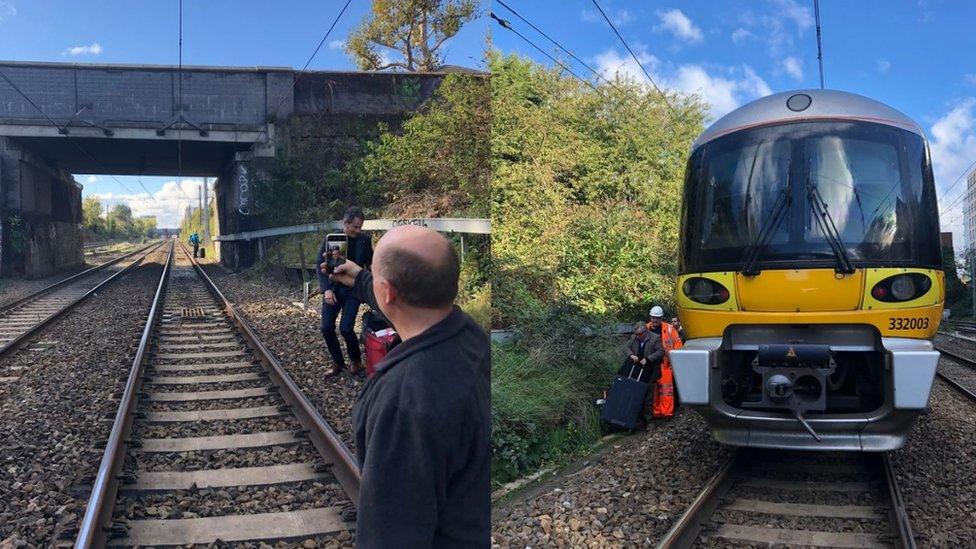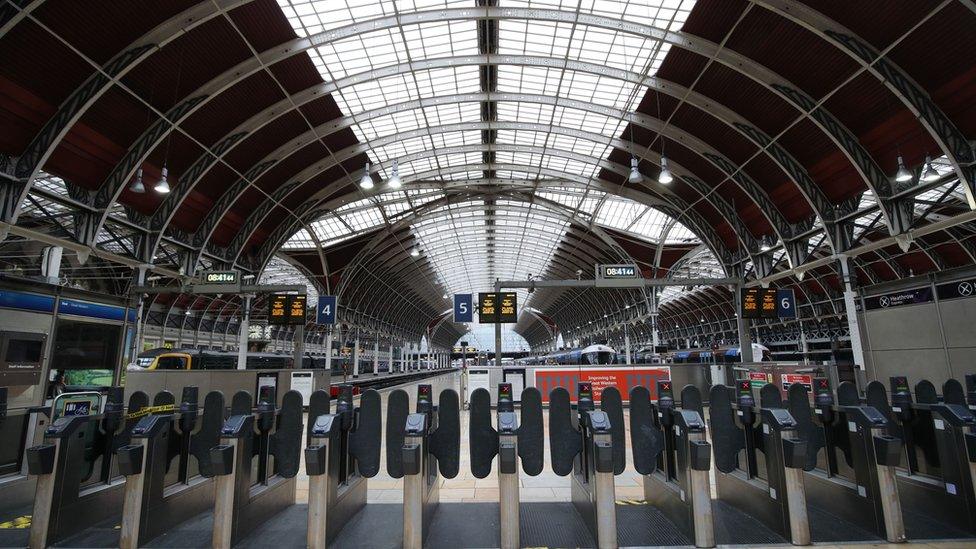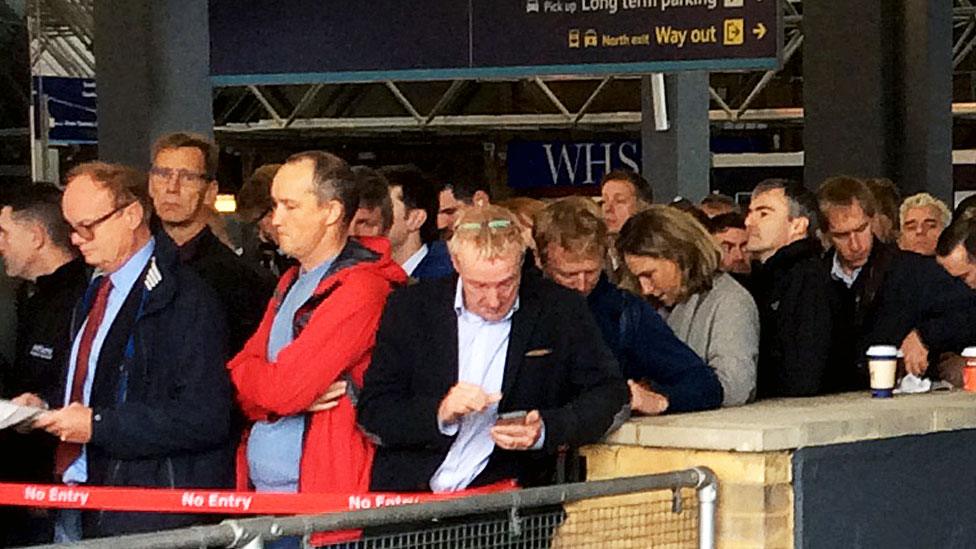Heathrow to Paddington trains were disrupted after power fault
- Published

Stranded passengers disembarked a Heathrow Express train due to damage to overhead power cables at Paddington
Rail passengers have faced disruption due to damage to overhead power cables near one of London's busiest stations.
Trains between Paddington, Heathrow, Oxford and Maidenhead were severely disrupted due to wires collapsing between Paddington and Hayes and Harlington.
Some people got off stranded trains and on to the tracks.
British Transport Police advised people not to leave trapped trains if stranded as train tracks are "very dangerous".
Earlier this month a test train damaged power cables near Paddington forcing services to be cancelled.
Allow X content?
This article contains content provided by X. We ask for your permission before anything is loaded, as they may be using cookies and other technologies. You may want to read X’s cookie policy, external and privacy policy, external before accepting. To view this content choose ‘accept and continue’.
Allow X content?
This article contains content provided by X. We ask for your permission before anything is loaded, as they may be using cookies and other technologies. You may want to read X’s cookie policy, external and privacy policy, external before accepting. To view this content choose ‘accept and continue’.
Five trains in the section of the collapsed lines were stuck, and some had to be evacuated.
Great Western Railway (GWR) said a limited train service had started to resume to and from London Paddington, however due to train crew and train services being displaced a reduced service will operate.

All train services between Paddington, Heathrow, and Maidenhead are currently suspended after damage to overhead power lines
Heathrow Airport services have resumed , externalafter being cancelled for much of Sunday.
Heathrow Express said it sent a rescue service to take passengers on their way to Heathrow Airport back to Paddington where a care team took them on to buses to complete their journey.

National Rail said disruption was expected until the end of the day
Disgruntled passengers took to social media to express concerns over delays and missing flights from Heathrow Airport.
Allow X content?
This article contains content provided by X. We ask for your permission before anything is loaded, as they may be using cookies and other technologies. You may want to read X’s cookie policy, external and privacy policy, external before accepting. To view this content choose ‘accept and continue’.
Allow X content?
This article contains content provided by X. We ask for your permission before anything is loaded, as they may be using cookies and other technologies. You may want to read X’s cookie policy, external and privacy policy, external before accepting. To view this content choose ‘accept and continue’.
Allow X content?
This article contains content provided by X. We ask for your permission before anything is loaded, as they may be using cookies and other technologies. You may want to read X’s cookie policy, external and privacy policy, external before accepting. To view this content choose ‘accept and continue’.
- Published17 October 2018
